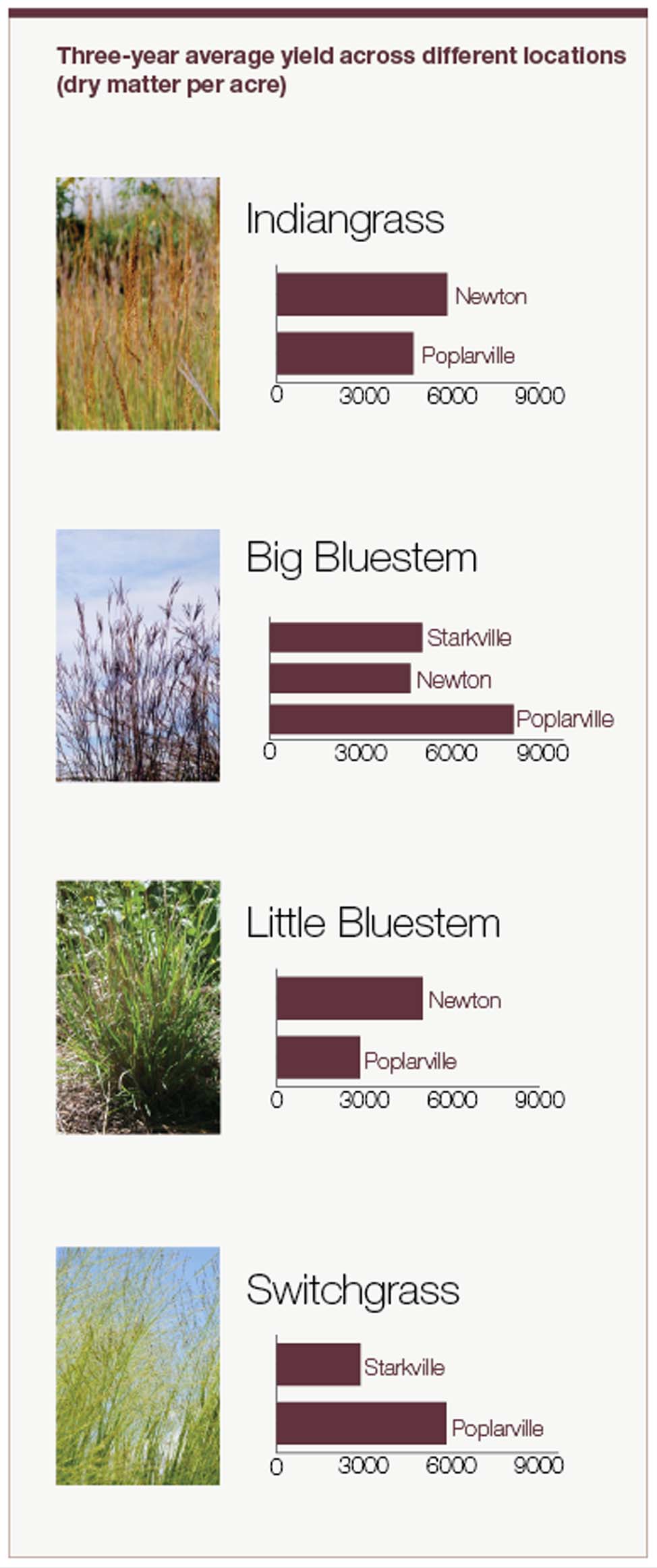The information presented on this page may be dated. It may refer to situations which have changed or people who are no longer affiliated with the university. It is archived as part of Mississippi State University's history.
Faculty and staff in the Mississippi Agricultural and Forestry Experiment Station evaluate the performance of native warm-season grasses as a component of the forage variety trials. MAFES is home to the most comprehensive forage testing program in the U.S.
Native warm-season grass forage variety trials are conducted in Starkville, Newton, and Poplarville. By testing in different locations, researchers can determine which varieties perform the best throughout the state and by geographic area.
Native grass variety trials include indiangrass, big bluestem, little bluestem, and switchgrass.
One of the advantages of native warm-season grasses is their minimum inputs required for production. Native warm-season grasses are drought tolerant, insect and disease resistant, and require fewer fertilizer inputs. A major disadvantage is their slow establishment.
Native warm-season grass pastures typically take two years to establish, with the field not in production during this period. This slow establishment is due to germination, weed competition, and weather conditions. Although most of these grasses begin rapid growth by early April in Mississippi, producers need to be prepared to have high stocking rates in a rotational system to keep up with biomass production from April to June.
After June, biomass production continues to increase, but forage quality, including palatability and nutritive value, decrease significantly due to maturity and seed production.
Native grasses cannot stand close grazing and at least a six to eight inch stubble should be allowed for regrowth. Using a rotational grazing and beginning grazing when grasses are 15 inches tall is recommended.
The MAFES Official Variety Trials are available online at mafes.msstate.edu/variety-trials. Forage variety trials include annual cool-season, annual warm-season, perennial cool-season, and native grass. Forage variety trials are conducted by associate extension/research professor Dr. Rocky Lemus and forage variety trial manager Joshua White. Dr. Lemus and Mr. White contributed to this article.


